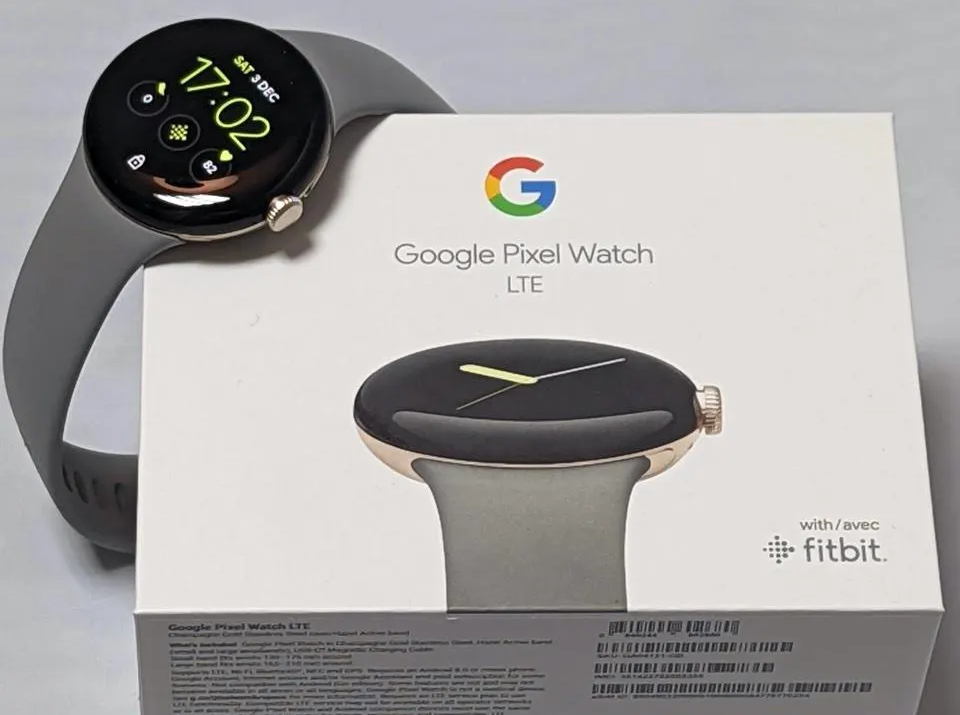In the rapidly evolving world of wearable technology, the Google Pixel Watch 3 has emerged as a standout contender with its innovative “loss of pulse” detection feature, a capability that has garnered significant attention since its unveiling. This remarkable advancement, highlighted in a detailed Forbes article by Andrew Williams, positions the Pixel Watch 3 as more than just a fitness tracker or a stylish accessory—it’s a potential life-saving device designed to intervene in critical health emergencies. The Pixel Watch 3 loss of pulse feature represents a bold leap forward, blending cutting-edge consumer technology with functionalities traditionally reserved for medical-grade equipment. This comprehensive review aims to dissect the intricacies of this feature, exploring its operational mechanics, its practical implications for a diverse range of users, its technical trade-offs, and its broader significance within the competitive landscape of smartwatches as of March 21, 2025. From its potential to save lives to its integration within Google’s ecosystem, this article covers every angle to provide a thorough understanding of why this device matters.
Advancing Health Monitoring
Beyond Basic Tracking: A New Frontier
The Google Pixel Watch 3 doesn’t settle for the conventional suite of smartwatch features—heart rate monitoring, step counting, sleep analysis, or calorie tracking—that have become standard across the industry. Instead, it introduces a revolutionary capability: the detection of a complete loss of pulse, a rare and alarming health event most commonly associated with life-threatening conditions such as sudden cardiac arrest or severe circulatory failure. This ambitious step transcends the typical boundaries of consumer wearables, venturing into territory that overlaps with professional medical tools. For individuals who prioritize health security—whether due to personal risk factors, family history, or simply a desire for peace of mind—the Pixel Watch 3 transforms from a mere gadget into a proactive companion capable of offering critical support in moments of crisis. As Google emphasized in its official announcement, this feature reflects a commitment to pushing wearable technology beyond fitness and into the realm of personal safety, appealing to a wide audience seeking more than just lifestyle enhancements.
How It Functions: The Science and Engineering Behind It
At the heart of the Pixel Watch 3’s “loss of pulse” detection lies a sophisticated combination of hardware and software working in tandem to monitor the wearer’s vital signs with remarkable precision. The system likely relies on an advanced photoplethysmography (PPG) sensor, a technology that uses light to measure blood flow beneath the skin, paired with motion detectors to account for physical activity and ensure accurate readings. These sensors continuously track the wearer’s pulse, generating a steady stream of data that is processed by intelligent algorithms designed to identify the absence of a pulse—a condition far more severe than irregular rhythms or temporary fluctuations. What sets this apart is its ability to differentiate between a genuine medical emergency and benign scenarios, such as when the watch is worn loosely, removed, or the wearer is in a state of deep rest. Google’s engineering team, in collaboration with medical professionals, has meticulously refined this technology to minimize false positives while ensuring rapid detection when it matters most. When a loss of pulse is confirmed, the watch can initiate an automated response—potentially sounding a loud alarm to alert nearby individuals or sending an emergency call with GPS coordinates to first responders. This intricate process, detailed in ZDNet’s coverage of its FDA clearance, underscores the complexity and reliability of this life-saving mechanism.
Life-Saving Potential
Real-World Impact: Scenarios Where It Shines
To fully appreciate the significance of the Pixel Watch 3’s “loss of pulse” detection, consider a few vivid real-world scenarios where this feature could prove transformative. Imagine an elderly individual living alone who experiences a sudden cardiac arrest in the middle of the night—a situation where every second counts, and help might otherwise arrive too late. The Pixel Watch 3 detects the absence of a pulse, immediately sends an alert to emergency services with the wearer’s exact location, and simultaneously notifies a designated family member, all within moments of the event. Or picture a middle-aged person with a known heart condition, perhaps jogging in a park, who collapses unexpectedly. The watch’s rapid response could summon paramedics before bystanders even realize the severity of the situation. For those at heightened risk—whether due to age, chronic illness, or genetic predisposition—this technology offers a tangible lifeline, bridging the gap between the onset of a crisis and professional intervention. This shift from passive health monitoring to active emergency response aligns with a growing trend in wearable tech, as Forbes previously noted in its coverage of the Pixel Watch 3’s capabilities, marking a pivotal evolution in how these devices serve their users.
Technical Considerations
Battery Life Impact: The Cost of Constant Vigilance
While the “loss of pulse c detection feature is undeniably impressive, it comes with technical trade-offs that warrant careful consideration. Continuous monitoring of such a critical metric places a substantial demand on the Pixel Watch 3’s battery, far exceeding the power requirements of basic functions like step counting or occasional heart rate checks. Although Google has yet to release precise figures as of March 2025, it’s reasonable to speculate that this always-on functionality could reduce the device’s battery life by several hours compared to less intensive usage modes. For context, earlier Pixel Watch models offered roughly 24 hours of use under typical conditions, a benchmark Forbes discussed in its battery life guidance. With this feature active, users might find themselves needing to recharge midday or at least once every 12-18 hours, depending on other activities like GPS tracking or notifications. To offset this, Google could incorporate fast-charging technology—perhaps achieving a full charge in under an hour—or introduce a low-power mode that prioritizes essential functions while extending runtime. For many, the prospect of more frequent charging will be a small price to pay for the added security, but it’s a practical consideration that could influence daily usage habits.
Design Adjustments: Form Meets Function
The inclusion of such an advanced health feature might necessitate subtle but significant adjustments to the Pixel Watch 3’s physical design. Accurate pulse detection requires consistent skin contact, which could mean a tighter fit than previous models or a more robust strap system to prevent slippage during movement. The sensor array on the watch’s underside might also be larger or more sophisticated than that of its predecessors, potentially incorporating additional light emitters or detectors to enhance precision across diverse skin tones and conditions. Drawing from design insights leaked about the Pixel Watch 2, it’s likely that Google has prioritized comfort and aesthetics despite these changes, ensuring the watch remains sleek and lightweight. These modifications, while minor, reflect a deliberate balance between form and function, ensuring the device performs its life-saving role without compromising wearability—a critical factor for a gadget meant to be worn 24/7.
User Experience
Accessibility and Ease: Simplicity in Complexity
One of the Pixel Watch 3’s strengths is its user-friendly approach to a highly complex feature. The “loss of pulse” detection operates passively in the background, requiring no manual activation or technical know-how from the wearer. This seamless integration makes it accessible to a broad audience, from tech-savvy younger users to older adults who may not be as comfortable with gadgets. Through the Fitbit app, users can customize how alerts are handled—choosing whether to notify emergency services, family members, or both, and setting preferences for sound or vibration cues. This balance of simplicity and customization ensures that the feature feels intuitive, even as it performs a sophisticated task, making it a standout option for those seeking powerful technology without a steep learning curve.
Privacy Concerns: Safeguarding Sensitive Data
The constant monitoring of a wearer’s pulse introduces significant privacy considerations that cannot be overlooked. With the Pixel Watch 3 collecting and analyzing such intimate health data around the clock, questions arise about how this information is stored, processed, and protected. Google, building on its experience with the Fitbit ecosystem, has likely implemented strong encryption protocols to secure this data, potentially processing much of it on-device to reduce reliance on cloud servers. However, as PhoneArena’s report on the U.S. rollout suggests, some data may still be transmitted for emergency purposes, raising the need for transparency. Users are encouraged to review the Fitbit privacy policy to understand whether their pulse data remains local or is shared, and under what circumstances. In an era where data breaches and privacy scandals dominate headlines, this feature’s life-saving potential must be weighed against the trust users place in Google’s stewardship of their personal information.
Ecosystem and Market Position
Software Integration: A Seamless Google Experience
The Pixel Watch 3 is deeply embedded in Google’s technological ecosystem, leveraging Wear OS and the Fitbit app to deliver a cohesive and powerful user experience. For Android phone owners, this means seamless synchronization—pulse data integrates with health dashboards, emergency alerts can leverage Google Assistant’s voice capabilities, and location sharing can tap into Google Maps for pinpoint accuracy. This tight-knit integration enhances the feature’s utility, allowing it to function as part of a broader network of devices and services. However, for iPhone users, compatibility may be restricted, a common limitation with Android-first wearables. While basic functions might work, the full suite of emergency response features will likely require an Android device, potentially limiting its appeal to Apple loyalists.
Competitive Edge: Standing Out in a Crowded Field
In a market teeming with capable smartwatches, the Pixel Watch 3 carves out a distinct niche with its “loss of pulse” detection. Apple’s Watch series offers fall detection and atrial fibrillation alerts, while Samsung’s Galaxy Watch tracks sleep apnea and blood oxygen levels—impressive feats, but none directly address the complete cessation of a pulse. This unique focus gives Google an edge, particularly for health-conscious consumers seeking specialized safety features, a point 9to5Google emphasized in its Feature Drop analysis. While competitors may catch up, the Pixel Watch 3’s first-mover advantage in this specific domain could solidify its reputation as a leader in wearable health innovation.
Target and Value
Ideal Users: Who Benefits Most?
The Pixel Watch 3’s audience extends far beyond the typical fitness enthusiast or tech aficionado. It’s particularly well-suited for seniors who live independently and face higher risks of cardiac events, as well as individuals with diagnosed heart conditions—such as arrhythmias or a history of heart attacks—who need constant vigilance. Even those without specific health concerns but with a proactive approach to safety might find this feature compelling. By catering to these groups, the watch broadens the demographic appeal of smartwatches, moving beyond the young, active crowd to include older adults and health-focused users who might otherwise overlook such devices.
Pricing Outlook: Balancing Cost and Benefit
Incorporating such advanced technology could drive up the Pixel Watch 3’s price tag. The Pixel Watch 2 retailed around $349, but this new feature—combined with potential hardware upgrades—might push the cost closer to $399 or even $449, aligning it more closely with premium competitors like the Apple Watch Series 10. For some, this increase might feel steep, especially if they don’t perceive an immediate need for the feature. However, for those who view it as a critical safety investment—akin to a personal emergency beacon—the price becomes justifiable, offering substantial value relative to its life-saving potential.
Challenges and Future
Potential Limitations: Where It Might Falter
No technology is without flaws, and the Pixel Watch 3’s “loss of pulse” detection is no exception. Factors like an improper fit—whether due to a loose strap, hairy wrists, or excessive movement—could compromise sensor accuracy, leading to missed detections or unnecessary alerts. Environmental extremes, such as freezing temperatures or intense humidity, might also challenge the hardware’s reliability. Google has likely engineered solutions for most of these edge cases, but real-world performance will ultimately determine its effectiveness, a test that only widespread use can fully reveal.
User Feedback Outlook: The Voice of Experience
As the Pixel Watch 3 reaches consumers, expect a wave of feedback that could shape its legacy. Stories of lives saved—perhaps a viral social media post about a timely alert—could cement its status as a must-have device, while reports of false positives or battery drain might temper enthusiasm. This user-driven narrative, which Droid-Life anticipates in its Feature Drop predictions, will play a crucial role in refining the feature through software updates and informing future iterations.
Regulatory Path: Navigating Global Standards
The medical nature of this feature subjects it to rigorous oversight. The FDA cleared it for use in the U.S. in February 2025, a milestone that validates its credibility but also highlights the regulatory hurdles Google must overcome for international markets. Differing standards in Europe, Asia, and beyond could delay global availability, requiring tailored adjustments to meet local health and safety requirements—a process that could stretch into late 2025 or beyond.
Long-Term Evolution: What Lies Ahead
Looking forward, the “loss of pulse” detection could evolve significantly with software enhancements. Imagine future updates adding predictive analytics—tracking pulse trends to warn of impending risks—or integrating with smart home systems to flash lights or unlock doors for responders. Google’s commitment to quarterly updates, as Droid-Life reports, ensures this feature won’t stagnate, promising long-term value that could make the Pixel Watch 3 a cornerstone of wearable health tech for years to come.
Pixel Watch 3 Loss of Pulse: Top 10 FAQs
- How accurate is the loss of pulse detection?
Refined with medical expertise, it’s highly reliable, though fit and skin factors can influence outcomes. - Does it work with iPhones?
Limited features work, but full functionality needs Android, per Wear OS norms. - Can I turn it off?
Likely yes, via the Fitbit app, to conserve power, though Google promotes constant use. - What happens on detection?
It alerts emergency services or contacts with GPS data, customizable in settings. - Is it global yet?
Currently U.S.-only, per PhoneArena, awaiting worldwide approvals. - Medical device replacement?
No, it complements, not replaces, professional tools. - Battery impact?
Expect a significant reduction—hours less per day—pending official stats. - Data privacy?
Encrypted, but review Fitbit’s policy for cloud details. - Other heart issues?
It targets loss of pulse, not rhythms—use ECG for those. - Subscription needed?
No, it’s included free, unlike some extras, per ZDNet.
The Future of Wearables
The Pixel Watch 3’s “loss of pulse” detection heralds a transformative era where wearables transcend their gadget status to become guardians of well-being. Google’s pioneering effort positions this device as a compelling choice for 2025, especially for Android users and those prioritizing health and safety, promising a future where technology doesn’t just track us—it protects us.








